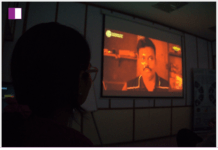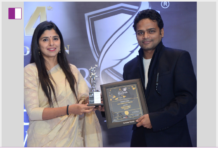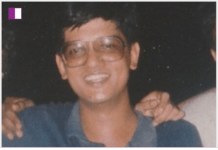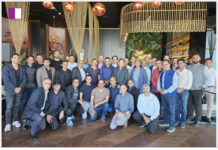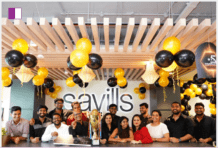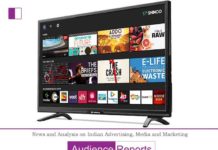Launched in 2021, it intends to disrupt the Indian energy drinks market with its maiden campaign in 2023.
Once associated with college students pulling all-nighters before a test or an adrenaline junkie before cycling down a cliff, the energy drinks segment, courtesy of Budweiser Beats, has been bestowed with a new purpose – creation.
The American beer brand’s energy drink will not grant the powers of the being above, it will, says Vineet Sharma, “unblock the creative block” and help creators on their journey of creation. He is the vice president of marketing at Anheuser-Busch InBev, Budweiser’s parent.
Breaking away from the topes of action and adventure which surround the energy drinks commercials, Budweiser Beats’ maiden ad— two years after its launch in 2021— pitches itself as the drink of choice for the young artists out there looking to create the next big thing.
“… the energy drinks category is filled with adrenaline junkie people doing races, jumping off clips, we are not that, we are all about creators,” remarks Sharma. The brand took its time to crack the right product, proposition, and distribution scale before releasing its first ad.
The ad will play during the IPL on Star Sports and JioCinema, on video streamers such as Voot and Disney+ Hotstar, and digital platforms such as Instagram, YouTube, and Facebook.
Budweiser Beats’ present and future campaigns will focus on creators because they, unlike movie stars or sports stars, can connect with young audiences better. However, these big celebrities are important admits Sharma. “I wouldn’t say celebs are not important, they give instant awareness…”
The energy drinks market in India is divided into two segments basis pricing says the VP of marketing. 50% of the market belongs to the premium segment which houses three brands: Budweiser Beats, Red Bull, and Monster. “The entire category’s penetration in India is close to 4%-5%,” he reveals.
Red Bull enjoys an 80% to 85% market and this lack of choice is one of the reasons that urged Budweiser to enter the energy drinks market. “Our intent was to enter the category and create disruption,” he says.
30% to 35% of the market belongs to the value segment which is where PepsiCo’s Sting and Coca-Cola’s Charged— both retail a 250ml pet bottle for Rs 20— come charging in, and Sharma further says a good 10%-15% come in from a core segment, in which there are energy drinks like Hell, Predator, Rio.
Budweiser Beats will undoubtedly target consumers of Budweiser’s beer brands, and it will also bank on India’s aspirations. “… people want to upgrade, with more money in their pockets, more exposure to international brands… if they are holding a Rs 20 product today, they’d want to hold a Rs 50 product tomorrow, and a Rs 100 product the day after tomorrow.”
He says it is the human psyche and not restricted only to energy drinks. Budweiser is seeing a huge rise in the consumption of premium and super-premium beers too.
The energy drinks segment, as much as it thrives off marketing, is a distribution game too. Sharma says the category is not only about being seen but about being available in cold, especially in a tropical country like India.
E-commerce and modern trade stores play a pivotal role in Budweiser Beats’ distribution strategy, the brand, surprisingly is seeing a lot of consumption via quick-commerce brands like Swiggy Instamart, Blinkit, and Zepto.
Sharma explains it is because of the impulse nature of the energy drinks category. “From a channel perspective, higher trade is coming from modern trade than e-comm,” he reveals.
The brand is seeing more single-pack consumption than a four or six-pack offering. “But on the Amazon and Flipkarts of the world, when they ship you, they will give you in fours and sixes,” reminds the VP of marketing. Many people in urban areas, he says, buy four or six packs of familiar brands.
Consumption of beer and energy drinks spikes at live events and that is why Budweiser Beats has made appearances at events like Magnetic Fields, Lollapalooza, Supersonic, and Ultra, where the Budweiser brand through its beer is a familiar name.
Similar to beer, the energy drink faces an on-trade (buy and consume at the same place) and off-trade (buy and consume somewhere else) challenge.
At hotels, restaurants, and cafes (HoReCa), “We have seen people either order Budweiser Beats as their first drink of the evening or to quench their thirst, or consume it as an ingredient in a cocktail.”
The brand is working with HoReCa partners to understand if it is mixing well with cocktails and if consumers are liking Budweiser Beats as an ingredient in cocktails that until now had another energy drink as part of its makeup. Budweiser had tie-ups with KFC and Indigo for 0.0 offering and is amidst signing agreements with QSRs for its energy drink.








